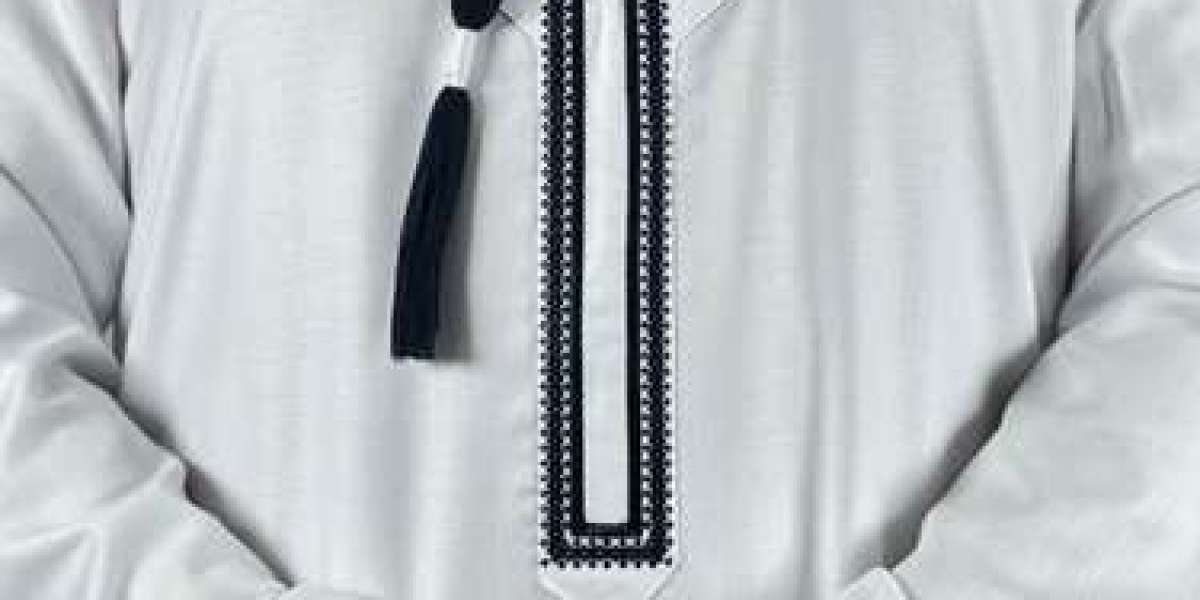The Omani thobe, a long, flowing garment worn by men in Oman, is more than just clothing; it's a powerful symbol of national identity, cultural heritage, and personal style. Its simple yet elegant design has remained largely unchanged for centuries, reflecting the enduring traditions of the Sultanate. This article delves into the rich history, intricate details, and modern adaptations of the Omani thobe, showcasing its significance in Omani society.
A History Woven in Threads
The origins of the mens Omani thobe can be traced back centuries, with influences from various cultures that have interacted with Oman throughout its history. While precise dates are difficult to pinpoint, historical records and visual representations suggest that similar garments have been worn in the region for generations. The thobe's design has evolved over time, incorporating elements from neighboring cultures while retaining its distinctive Omani character. It stands as a testament to Oman's unique position at the crossroads of trade and cultural exchange.
The Anatomy of the Thobe: Simplicity and Refinement
The Omani thobe is characterized by its clean lines and loose, comfortable fit. It typically extends to the ankles and is made from a variety of fabrics, ranging from lightweight cotton for everyday wear to luxurious silks and wools for special occasions. The thobe's defining features include:
The Dishdasha: The Classic Outer Garment
The dishdasha is the most common type of Omani thobe. It's a simple, ankle-length garment with long sleeves. It often features a subtle embroidery design around the collar, cuffs, and sometimes the placket. The color of the dishdasha can vary, with white being the most popular choice for everyday wear, while other colors like beige, blue, and black are common for formal occasions.
The Mandoos: A Touch of Formality
The mandoos is a more formal type of thobe, often worn for weddings, religious ceremonies, and other important events. It's typically made from finer fabrics and features more elaborate embroidery, often incorporating silver or gold thread. The mandoos may also include a tarboush, a tassel that hangs down the back.
The Sirwal: The Undergarment
Worn underneath the thobe is the sirwal, a loose-fitting pair of trousers that extends to the ankles. The sirwal is usually made from cotton and provides comfort and modesty.
The Accessories that Complete the Look
Several accessories complement the Omani thobe, adding to its overall elegance and cultural significance.
The Kummah: The Embroidered Cap
The kummah is a beautifully embroidered cap that is an essential part of Omani men's attire. It's often intricately designed with geometric patterns and comes in a variety of colors. The kummah is a symbol of status and is often passed down through families.
The Khanjar: The Ceremonial Dagger
The khanjar is a curved dagger that is a national symbol of Oman. It's traditionally worn at the waist, often in an ornate silver sheath. While not worn daily, the khanjar is an important part of Omani heritage and is often worn for ceremonial occasions.
The Mussar: The Turban
In some regions of Oman, men wear a mussar, a turban made from fine fabric. The style and color of the mussar can vary depending on the region and occasion.
The Modern Evolution of the Thobe
While the traditional design of the Omani thobe remains prevalent, modern adaptations are emerging. Designers are experimenting with new fabrics, colors, and embroidery styles, while still maintaining the core essence of the garment. This evolution ensures that the Omani thobe continues to be relevant and appealing to younger generations, while also preserving its cultural significance.
The Thobe: A Symbol of Omani Identity
The Omani thobe is more than just a piece of clothing; it's a powerful symbol of Omani identity, heritage, and pride. It represents the values of modesty, respect, and tradition that are deeply ingrained in Omani culture. The thobe is a unifying element, worn by men from all walks of life, reinforcing a sense of shared identity and belonging.
Conclusion
The Omani thobe stands as a testament to the enduring power of tradition and the beauty of simplicity. Its timeless design, rich history, and cultural significance make it a cherished garment that continues to be an integral part of Omani life. As Oman continues to evolve, the thobe is likely to adapt and modernize, while still retaining its core identity as a symbol of national pride and cultural heritage. It is a garment that speaks volumes about the history, values, and aspirations of the Omani people.
Visit the official website of al-haqthobes.com



